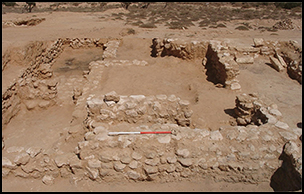Published online by Cambridge University Press: 06 December 2017

Research on Late Bronze Age relations between Egyptians and local nomadic or semi-nomadic Libyans has hitherto focused almost exclusively on Egyptian textual and iconographic sources. Recent archaeological evidence for grain production and agrarian practice at the Egyptian fortress of Zawiyet Umm el-Rakham allows us to address this imbalance, in combination with ethnographic data and cross-cultural parallels drawn from nomad-sedentary interactions in the Near East. Results suggest that Egyptian subsistence in this relatively isolated outpost of the New Kingdom Empire was probably dependent upon Libyan manpower and their knowledge of local environmental conditions and effective farming methods.